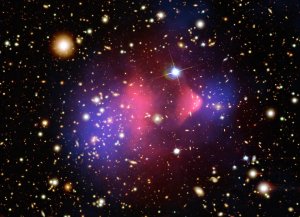 |
Project Assignment for Matter and Interactions |
Project Description
Project TeamsScientists collaborate with each other on research projects. The members of the collaboration contribute with their own expertise, making the collaboration stronger than the individual members. For this reason, our projects will be carried out by pairs of students. In order to balance the work, but make sure that collaboration is occurring, all project teams must have exactly two students. Initially, their will be no exceptions to this rule.
Project Deliverables
The final deliverable for the project will be a poster and a final report.
- A jointly-made poster that will be submitted as a pdf file and presented in a virtual poster session near the end of the semester. The poster should be about 32" by 40". Details on making your poster is given below.
- Each member of the collaboration will submit a final report. This typed report must be written by each student and must be your own work. Team members may proof read each other's reports, but not copy it. This report should emphasize your contribution to the project. Details of the report are given below.
Project Scope
Each project must address a physics question that is mutually agreed upon by the team members
and Professor Meyer. The physics must be related to the material covered in Matter and
Interactions, but does not need to be limited by the course material. Each project must have
a scientific computing component where the team uses computer modeling to address their
problem. In addition, the project must have a theoretical aspect. It can also have an
experimental component, but this is not required.
In doing the project, the team should develop a set of data and then analyze these data to come to conculsions about their question. Assumptions and approximations should be spelled out, and to the extent possible, the teams should address how these might impact their final answer.
Possible Projects
A starting point for possible projects are the VPython programing exercises that we will be doing in recitation. Some of these asignments are as follows.- The Earth orbiting the Sun (week 2).
- A mass on a spring (week 4).
- Sending a spaceship to the Moon (week 6).
- Energy dissipation (week 7).
Project Timeline
- Friday October 9 --- Draft project proposal due.
- Monday November 30 --- Project outline due.
- Week of December 7 --- Virtual Poster session.
- Wednesday December 15 --- Project Report Due.
Project Outline
The project outline should be similar to the outline of a term paper. The following generic outline will can probably address most situations.- Statement of the Problem
- The Physics Problem that you are addressing.
- The question(s) that you will answer.
- Numerical Solution to the problem.
- What will you calculate numerically in your project?
- What simplifications will you have in your model?
- Other Solutions to the problem (theoretical/experimental).
- Will you have a theoretical solution?
- What assumptions will you have to make?
- Will you have an experimental solution?
- If so, what will you be measuring?
- What do you expect the solution to be?
Making a Poster
- Posters will be 32'' by 40'', and can be either portrait or landscape. We will have
32" by 40" posterboard available for your posters. You will need to get one from
Professor Meyer's office (Wean 8414).
- You can create your poster by attaching many individual sheets to the board, or you can
create a single large poster and attach it to the board. Independent of how you make the
material on your board, it should be generated by a computer and not hand written.
- If you would like to place a CMU or CMU Physics Logo on your poster, you can find links
to them at the
logos website.
- If you would like to make you poster using Powerpoint, there is a nice tutorial on how to
do this on YouTube.
There is also a nice written description at
this site.
If you get one of the templats from here, select one of the 36 by 48 forms (either
landscape or portarit) and change the size to be no larger than 32 by 40 so it will
fit on the poster board.
- If you make a large poster in powerpoint, or some other program, we will have an account at Kinkos in the basement of the UC where you can get it printed. You should take both a pdf and a powerpoint version of your poster on a memory stick to Kinkos. It usually takes under 24 hours to get them printed.
Poster Presentation
On Thursday December 5 at 4:30pm to 5:30pm in Wean 7300 Corridor, we will be holding a poster session and inviting the physics faculty. Stands will be provided to mount your poster and refreshments will be available. People will walk around and ask you questions about your work.Final Report
Each team member will submit a 3-5 page written report which emphasizes the part of the project to which you most significantly contributed. Your report should contain the following:- Title of your project.
- Your name and your partner's name in the form Your Name in collaboration with Parter Name
- 2-3 sentance abstract for the project.
- 2-3 paragraphs describing the project and your conclusions.
- 1-2 paragraphs describing your contribution.
- 1 paragraph summary/conclusion.